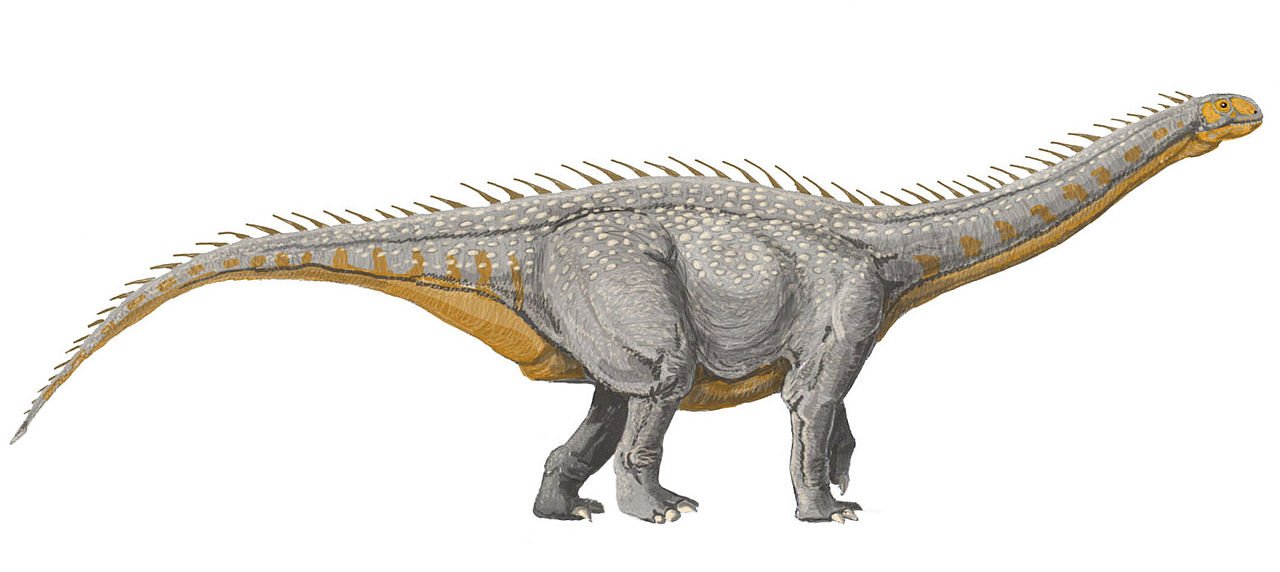A Large Sauropod from the Early Jurassic Period
Barapasaurus Appearance
Barapasaurus was a large sauropod dinosaur that lived during the Early Jurassic period, around 190-185 million years ago. It had a long neck and tail, and a massive body supported by four sturdy legs. Barapasaurus had a small head with nostrils on the top of its skull, much like the Brachiosaurus most people think of when it comes to sauropods.
Its teeth were spoon-shaped and suited for grinding tough plant material. Barapasaurus had a distinctive hump on its back, which may have been used for storing fat or as a display feature.
Barapasaurus Habitat and Where it Lived
Barapasaurus lived in what is now India, during the Early Jurassic period. The environment during this time was characterized by lush forests and swamps, with a warm and humid climate. The plants that Barapasaurus likely encountered included ferns, cycads, and conifers. Other dinosaur species that lived alongside Barapasaurus included Dilophosaurus, a small carnivorous dinosaur.
Barapasaurus Behaviour
Barapasaurus was an herbivore and likely ate a variety of plant material, such as leaves and ferns. Its long neck allowed it to reach high into trees to access food that other herbivores could not. Barapasaurus likely lived in herds, which would have provided additional protection against predators. Its large size and sturdy legs made it a formidable opponent, and it may have used its tail as a weapon to defend itself against predators.
Who Discovered Barapasaurus and Where
Barapasaurus was first discovered in the early 1970s by a team of Indian paleontologists led by Sohan Jain. The fossils were found in the Kota Formation in India, which is known for its rich deposits of dinosaur fossils.
Additional Facts and FAQs
- Barapasaurus is one of the earliest known sauropod dinosaurs, and its discovery helped shed light on the evolution of these massive creatures.
- The hump on Barapasaurus’ back is a unique feature among sauropods, and its function is still being studied by paleontologists.
- Barapasaurus is named after the Bara Formation in India, where its fossils were first discovered.
- Barapasaurus was a massive dinosaur, with some estimates suggesting that it may have reached lengths of up to 18 meters.
- Barapasaurus likely had a slow metabolism and may have been able to survive on less food than other herbivores of similar size.
FAQs about Barapasaurus
- Q: What does the name Barapasaurus mean?
- A: The name Barapasaurus is derived from the Hindi words “bara” meaning big and “pa” meaning leg, referring to its large legs.
- Q: How did Barapasaurus defend itself against predators?
- A: Barapasaurus likely used its massive size and sturdy legs to defend itself against predators. It may have also used its tail as a weapon to fend off attackers.
- Q: What other dinosaur species lived alongside Barapasaurus?
- A: Other dinosaur species that lived alongside Barapasaurus included Dilophosaurus, a small carnivorous dinosaur.
- Q: What is the significance of Barapasaurus?
- A: Barapasaurus is significant because it is one of the earliest known sauropod dinosaurs, and its discovery helped shed light on the evolution of these massive creatures. Its unique features, such as the hump on its back, provide valuable insights into the behavior and physiology of sauropods.
Barapasaurus was a massive sauropod dinosaur that lived during the Early Jurassic period in India. Its long neck and tail, sturdy legs, and distinctive hump make it a unique and recognizable dinosaur. Barapasaurus likely lived in herds and was an herbivore, using its massive size and specialized teeth to eat tough plant material. Its discovery has provided valuable insights into the evolution and behavior of sauropod dinosaurs.


